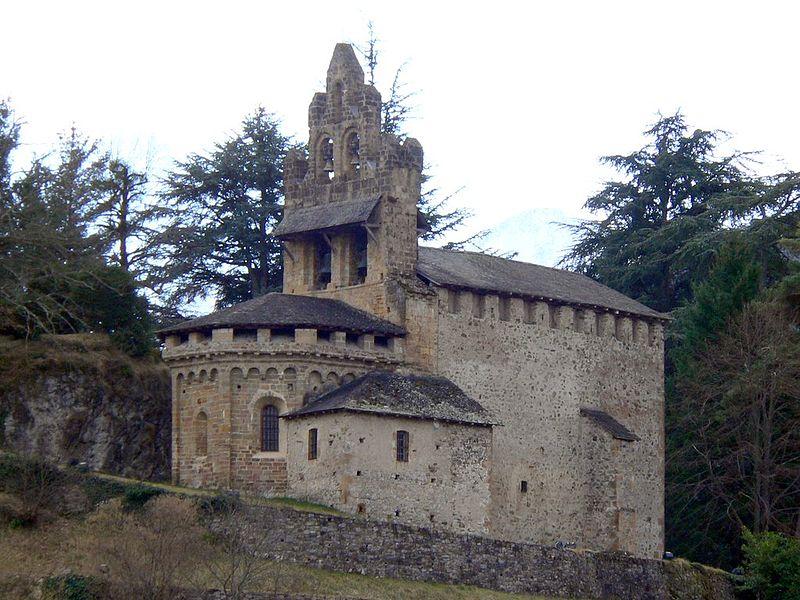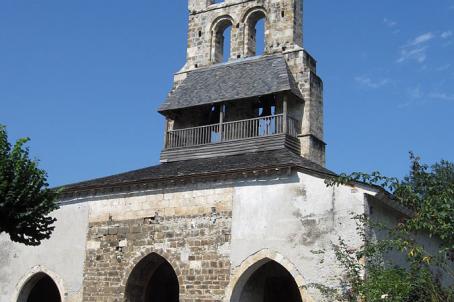Chapel of Saint Peter, Castillon en Couserans

This building is on the site where a strong castle, owned by the Counts of Comminges, was demolished in the 17th century on royal orders, leaving only the castral chapel dating from the end of the 11th century to remain. It is a stopover on the way to the Pyrenean Piedmont of Santiago de Compostela. The interior has murals of rare iconography from the 13th century. After a climb under the gigantic cedars, you will discover its southern portal decorated with arches on balusters and sculpted capitals.
About this building
This is a rectangular plan building, with a polygonal apse and a level lower than the rest of the chapel. A wall bell tower rises at the level of the choir, made up of three different floors. The first houses the bells, sheltered by a roofing panel, and the second, pierced by two semicircular arches with pinnacles.





